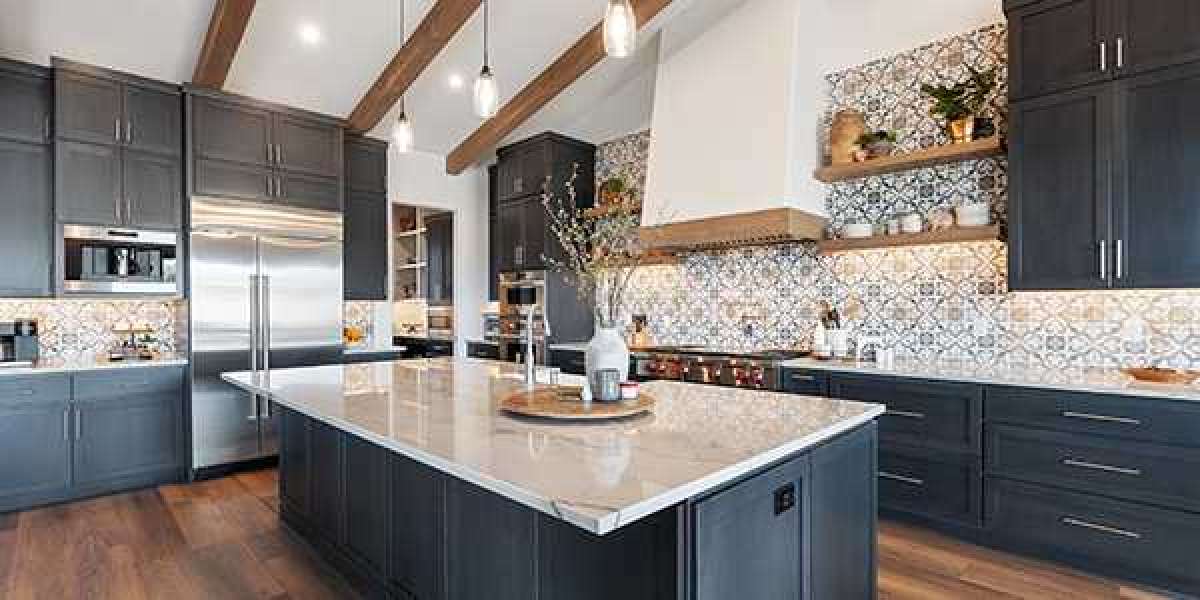Creating a sustainable kitchen is more than just a trend – it's a lifestyle choice that benefits both the environment and your wallet. Whether you're renovating or starting from scratch, a sustainable kitchen can help reduce your ecological footprint while ensuring your space remains functional and beautiful. In this guide, we'll explore eco-friendly materials and design tips to help you build your very own sustainable kitchen.
Why Choose a Sustainable Kitchen?
A sustainable kitchen is designed with the planet in mind. It uses eco-friendly materials, minimizes energy consumption, and focuses on waste reduction. By making conscious decisions about the products you use, you contribute to a cleaner environment while enjoying long-term savings.
1. Choose Sustainable Materials
The foundation of any sustainable kitchen lies in the materials you select. Here are some top eco-friendly materials to consider:
Bamboo: Bamboo is one of the most sustainable materials available. It's fast-growing, requires minimal water, and is incredibly durable. Use bamboo for flooring, countertops, or cabinetry to add an organic, modern touch to your kitchen.
Reclaimed Wood: Instead of using freshly cut timber, opt for reclaimed wood. This reduces the need for deforestation and gives old materials a new life. Reclaimed wood can be used for cabinetry, shelves, or even as a statement piece in the form of a rustic dining table.
Recycled Countertops: Look for countertops made from recycled materials, such as glass, paper, or even concrete. These materials not only look stylish but also help reduce waste by repurposing materials that would otherwise end up in landfills.
2. Energy-Efficient Appliances
One of the most impactful ways to make your kitchen sustainable is by choosing energy-efficient appliances. Here’s how to make smarter choices:
Energy Star Ratings: Look for appliances that have the Energy Star label, which indicates they meet specific energy efficiency guidelines set by the U.S. Environmental Protection Agency. Energy-efficient refrigerators, dishwashers, and ovens can save you money while reducing your home's overall energy consumption.
Induction Cooktops: Induction cooktops are more energy-efficient than traditional gas or electric stoves. They use magnetic energy to directly heat cookware, making them faster and more efficient. Plus, they don't produce extra heat, keeping your kitchen cooler and reducing the need for air conditioning in warmer months.
3. Water-Saving Features
Water conservation is crucial for a sustainable kitchen. Consider installing these water-saving features to reduce your kitchen's water usage:
Low-Flow Faucets: These faucets limit the amount of water that flows out without compromising water pressure. A low-flow faucet can save you hundreds of gallons of water every year.
Dishwasher with Water-Saving Settings: Modern dishwashers come with water-saving cycles that optimize water use. Look for models that are both energy-efficient and designed to use less water per load.
4. Sustainable Lighting
Lighting plays a big role in the sustainability of your kitchen. To reduce energy usage, consider:
LED Lighting: LED bulbs consume less energy and last longer than traditional incandescent bulbs. They are perfect for kitchen task lighting, accent lights, and under-cabinet lighting.
Natural Light: Maximize the amount of natural light in your kitchen by using large windows, skylights, or light-reflective surfaces. Natural light reduces the need for artificial lighting during the day and creates a brighter, more inviting space.
5. Waste Reduction Strategies
Reducing waste is essential in a sustainable kitchen. Here are a few ways to minimize waste:
Composting: Set up a composting system in your kitchen to dispose of food scraps. Composting reduces landfill waste and provides you with nutrient-rich soil for your garden.
Recycling Stations: Dedicate a space in your kitchen for recycling bins to separate paper, plastic, and glass. This encourages better waste management and keeps recyclable materials out of landfills.
Buy in Bulk: Purchasing in bulk can reduce packaging waste. Invest in reusable containers to store your bulk items, and you'll minimize your reliance on single-use plastic bags and boxes.
6. Sustainable Kitchen Design
Incorporating sustainable kitchen design ideas can help you create a beautiful yet eco-conscious space:
Open Shelving: Instead of opting for traditional cabinets, consider open shelving to reduce the amount of wood or other materials used. It can also give your kitchen a more modern and airy feel.
Upcycled Furniture: If you're looking to add some new pieces to your kitchen, consider upcycling old furniture. For example, an old wooden ladder can be repurposed into a shelf or hanging rack for your kitchen tools.
Conclusion
Building a sustainable kitchen is all about making mindful choices. From selecting eco-friendly materials to investing in energy-efficient appliances, there are many ways to reduce your environmental impact while creating a stylish and functional kitchen. By incorporating these tips, you’ll not only save money and energy but also contribute to a greener, more sustainable future.
FAQs
What is a sustainable kitchen? A sustainable kitchen uses eco-friendly materials, energy-efficient appliances, and practices that minimize waste and reduce environmental impact.
How can I make my kitchen more energy-efficient? Choose appliances with the Energy Star label, switch to induction cooktops, and use LED lighting to reduce energy consumption in your kitchen.
What materials are best for a sustainable kitchen? Bamboo, reclaimed wood, and recycled countertops are excellent choices for building a sustainable kitchen.
How can I reduce water usage in my kitchen? Install low-flow faucets, use water-saving dishwashers, and fix leaks promptly to minimize water wastage in the kitchen.
What is the benefit of using bamboo in a kitchen? Bamboo is a renewable resource that grows quickly, requires minimal water, and is highly durable, making it an eco-friendly material for your kitchen.








